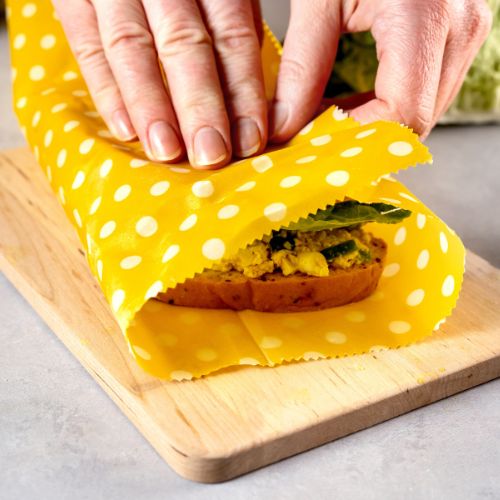Every actionable step toward a greener planet starts with policing ourselves at home. However, we often feel lost when searching for eco-friendly ways to preserve food because plastic is pretty unanimous throughout the food handling, safety, and storage world. Fortunately, there are realistic ways to store food that are kind to Mother Nature and the surrounding ecosystem. Consider some of these options before reaching for another plastic bag.
Utilizing Durable Glass Containers
The pantry is the best starting point when transforming the kitchen into an eco-friendly paradise. Start shedding your shelves of bulky bags and cans for glass jars and containers instead. Aside from their aesthetic appeal, they are champions of durability and reusability. Storing dry staples in sealed glass ensures freshness while keeping pests at bay. This method aligns with a sustainable lifestyle by significantly reducing single-use plastic packaging.
The Magic of Beeswax Wraps
Imagine a product engineered by nature and perfected by humanity for the simple function of protecting food—here, beeswax enters the scene. Beeswax has potential as a renewable and sustainable resource, and that’s even true in the kitchen with beeswax wraps. They form a natural seal over dishes and freshly cut produce, adapting to the container’s shape and size and significantly extending their usability. Their washable nature promises an extensive repeated-use lifecycle, deeming them superior to disposable plastic wraps.
Plant-Based Compostable Bags
Enter compostable bags, the plant-derived warriors in the fight against food waste and plastic pollution. These breathable vessels are ideal for refrigerating or freezing perishables, ensuring freshness and vitality. They gracefully decompose after use, leaving no trace of their existence—unlike plastic, which lingers in landfills.
Mastering the Art of Pickling and Preserving
There is a certain charm to the age-old practice of pickling and making preserves. This method enables a bountiful harvest to sustain beyond its season, decorating homes with jars of colorful concoctions. Delving into this craft eliminates dependency on store-bought products laden with preservatives and excess packaging.
Innovating With Ice Cube Trays
One of the most ingenious ways to use ice cube trays is with herb, sauce, and soup preservation. This method freezes the contents to use for future creations. It’s a simple yet robust strategy for preparing quality meals for your family while reducing waste and dependency on plastic bags and wraps. Now, there’s another reason to host brunch and dinner parties in your abode!
Dehydrating for Preservation
Dehydration is a natural process that prolongs the shelf life of food. One can easily stockpile snacks and ingredients without using artificial additives. Providing a palate of textures and flavors, preservation through dehydration adheres to sustainable practices.
Preserving for a Greener (and Tastier) Future
Adopting eco-friendly food preservation practices is more than a trend; it’s a lifestyle change that can significantly contribute to environmental conservation. By choosing sustainable options over conventional methods, individuals have the potential to impact the health of our planet positively. These practices reduce waste and reliance on non-renewable resources and enhance the quality and flavor of our food. It’s an integrated approach that benefits us, our communities, and the environment, reinforcing the belief that slight changes can make a significant difference.

